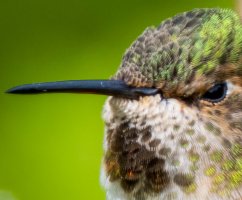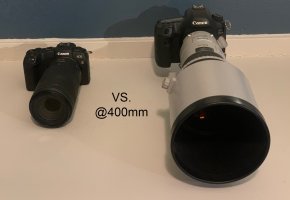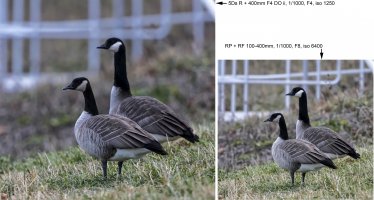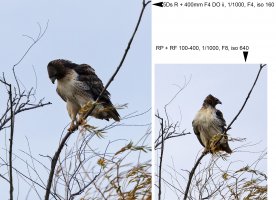If you think the 100-400 looks sharper than the 400 in this comparison
https://www.the-digital-picture.com...meraComp=979&SampleComp=0&FLIComp=0&APIComp=0 , then possibly you should see an optometrist. Certainly the 400 is a bit sharper at f/4 than f/2.8 but it is always sharper than the 100-400 at 400. The downside of that comparison is that both lenses are good enough that the chart doesn't offer much differential information. The 7D2 test effective rescales the chart, so you can better see the differences even though the 5DSr and 7D2 have similar pixel pitch. The tests on TDP are clearly one copy tests, but if a copy appears bad, they often test a second copy for verification. Clearly not as rigorous as Roger's 10 lens runs, but still the best comparison over time of a wide group of lenses. Roger only tests high runners and sometimes lenses he fancies. TDP uses DPP to process canon raws and the biggest variable I have seen is the way DPP behaves with different bodies since it seems to try to emulate what the camera does internally and that varies substantially with different AA filters on different sensors. DPP often does not agree with ACR or DXO PhotoLab on sharpness. The difference is not huge, but certainly something to be aware of. This is one of the most noticeable examples
https://www.the-digital-picture.com...eraComp=1078&SampleComp=0&FLIComp=0&APIComp=3. The 80D and the M5 have essentially the same sensor, but the AAF is different and DPP does some weird stuff with the M5. The M5 is much sharper when processed through ACR. There is also the matter of sharpness vs focus distance. Roger's tests are effectively at infinity focus and TDP's tests are at the distance the chart fills the frame, so closer for wide lenses than for Tele lenses, but always much closer than infinity. I find the best approach is to read as many reviews as possible, because different reviewers tend to pick up on different pluses and minuses of lens behavior, such as field curvature, which can be a problem or used to advantage depending on your perspective. BTW, my comments on the 70-300L were not exclusive to TDP. I have the lens and it is one in a very short list that holds up to the sensor in the 90D.






